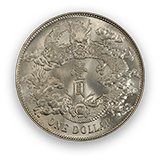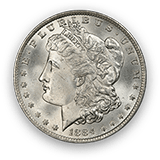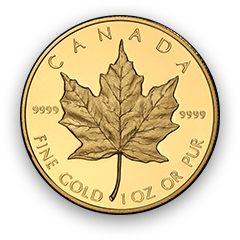Aurelian Select Acquisitions 的钱币相册
1856 1C MS66 PCGS CAC EEPS, Snow-3 Die Variety, Die Stage A. Provenance: Ex Stewart Blay Collection. Esteemed by the legendary collector Stewart Blay as the finest Mint State 1856 Flying Eagle, this exceptional coin boasts remarkable eye appeal, a beauty best appreciated in person (though uploaded photos at least better demonstrate its eye appeal than the cert photo does). It represents a pinnacle of quality, being one of only two Snow-3 examples graded MS66 by PCGS (a third MS66 is attributed to the Snow-5 variety). This significant coin set a record auction price of $343,125 in November 2023 (Great Collections - Nov 12, 2023 - GC Item ID: 1456023), the highest ever achieved for any 1856 Flying Eagle cent, and in fact the highest for any Flying Eagle cent. The Snow-3 die variety, along with the Snow-1, belongs to the "Original Striking" of 1856 Flying Eagles (Snow-5s may also have been part of the Original striking). These Original coins were strategically presented to key figures in the U.S. government to advocate for the passage of the Small Cents Act of 1857. Following the striking of rare Snow-1 Proofs and then the unique "Bluebird" Proof Snow-3 (also Die Stage A), Mint State Snow-3s, including this Die Stage A example, were produced. All known Snow-3 coins (apart from the "Bluebird") exhibit some weakness of strike, typically noticeable on the eagle's breast feathers or the reverse leaves. This coin exhibits some weakness on the breast feathers, which is especially noticeable when comparing its cert with the cert of the “Bluebird” (cert #38725098).
1856 1C MS66 PCGS CAC EEPS, Snow-3 Die Variety, Die Stage A. Provenance: Ex Stewart Blay Collection. Esteemed by the legendary collector Stewart Blay as the finest Mint State 1856 Flying Eagle, this exceptional coin boasts remarkable eye appeal, a beauty best appreciated in person (though uploaded photos at least better demonstrate its eye appeal than the cert photo does). It represents a pinnacle of quality, being one of only two Snow-3 examples graded MS66 by PCGS (a third MS66 is attributed to the Snow-5 variety). This significant coin set a record auction price of $343,125 in November 2023 (Great Collections - Nov 12, 2023 - GC Item ID: 1456023), the highest ever achieved for any 1856 Flying Eagle cent, and in fact the highest for any Flying Eagle cent. The Snow-3 die variety, along with the Snow-1, belongs to the "Original Striking" of 1856 Flying Eagles (Snow-5s may also have been part of the Original striking). These Original coins were strategically presented to key figures in the U.S. government to advocate for the passage of the Small Cents Act of 1857. Following the striking of rare Snow-1 Proofs and then the unique "Bluebird" Proof Snow-3 (also Die Stage A), Mint State Snow-3s, including this Die Stage A example, were produced. All known Snow-3 coins (apart from the "Bluebird") exhibit some weakness of strike, typically noticeable on the eagle's breast feathers or the reverse leaves. This coin exhibits some weakness on the breast feathers, which is especially noticeable when comparing its cert with the cert of the “Bluebird” (cert #38725098).
1856 1C MS66 PCGS CAC EEPS, Snow-3 Die Variety, Die Stage A. Provenance: Ex Stewart Blay Collection. Esteemed by the legendary collector Stewart Blay as the finest Mint State 1856 Flying Eagle, this exceptional coin boasts remarkable eye appeal, a beauty best appreciated in person (though uploaded photos at least better demonstrate its eye appeal than the cert photo does). It represents a pinnacle of quality, being one of only two Snow-3 examples graded MS66 by PCGS (a third MS66 is attributed to the Snow-5 variety). This significant coin set a record auction price of $343,125 in November 2023 (Great Collections - Nov 12, 2023 - GC Item ID: 1456023), the highest ever achieved for any 1856 Flying Eagle cent, and in fact the highest for any Flying Eagle cent. The Snow-3 die variety, along with the Snow-1, belongs to the "Original Striking" of 1856 Flying Eagles (Snow-5s may also have been part of the Original striking). These Original coins were strategically presented to key figures in the U.S. government to advocate for the passage of the Small Cents Act of 1857. Following the striking of rare Snow-1 Proofs and then the unique "Bluebird" Proof Snow-3 (also Die Stage A), Mint State Snow-3s, including this Die Stage A example, were produced. All known Snow-3 coins (apart from the "Bluebird") exhibit some weakness of strike, typically noticeable on the eagle's breast feathers or the reverse leaves. This coin exhibits some weakness on the breast feathers, which is especially noticeable when comparing its cert with the cert of the “Bluebird” (cert #38725098).
1856 1C MS66 PCGS CAC EEPS, Snow-3 Die Variety, Die Stage A. Provenance: Ex Stewart Blay Collection. Esteemed by the legendary collector Stewart Blay as the finest Mint State 1856 Flying Eagle, this exceptional coin boasts remarkable eye appeal, a beauty best appreciated in person (though uploaded photos at least better demonstrate its eye appeal than the cert photo does). It represents a pinnacle of quality, being one of only two Snow-3 examples graded MS66 by PCGS (a third MS66 is attributed to the Snow-5 variety). This significant coin set a record auction price of $343,125 in November 2023 (Great Collections - Nov 12, 2023 - GC Item ID: 1456023), the highest ever achieved for any 1856 Flying Eagle cent, and in fact the highest for any Flying Eagle cent. The Snow-3 die variety, along with the Snow-1, belongs to the "Original Striking" of 1856 Flying Eagles (Snow-5s may also have been part of the Original striking). These Original coins were strategically presented to key figures in the U.S. government to advocate for the passage of the Small Cents Act of 1857. Following the striking of rare Snow-1 Proofs and then the unique "Bluebird" Proof Snow-3 (also Die Stage A), Mint State Snow-3s, including this Die Stage A example, were produced. All known Snow-3 coins (apart from the "Bluebird") exhibit some weakness of strike, typically noticeable on the eagle's breast feathers or the reverse leaves. This coin exhibits some weakness on the breast feathers, which is especially noticeable when comparing its cert with the cert of the “Bluebird” (cert #38725098).
1856 1C MS66 PCGS CAC EEPS, Snow-3 Die Variety, Die Stage A. Provenance: Ex Stewart Blay Collection. Esteemed by the legendary collector Stewart Blay as the finest Mint State 1856 Flying Eagle, this exceptional coin boasts remarkable eye appeal, a beauty best appreciated in person (though uploaded photos at least better demonstrate its eye appeal than the cert photo does). It represents a pinnacle of quality, being one of only two Snow-3 examples graded MS66 by PCGS (a third MS66 is attributed to the Snow-5 variety). This significant coin set a record auction price of $343,125 in November 2023 (Great Collections - Nov 12, 2023 - GC Item ID: 1456023), the highest ever achieved for any 1856 Flying Eagle cent, and in fact the highest for any Flying Eagle cent. The Snow-3 die variety, along with the Snow-1, belongs to the "Original Striking" of 1856 Flying Eagles (Snow-5s may also have been part of the Original striking). These Original coins were strategically presented to key figures in the U.S. government to advocate for the passage of the Small Cents Act of 1857. Following the striking of rare Snow-1 Proofs and then the unique "Bluebird" Proof Snow-3 (also Die Stage A), Mint State Snow-3s, including this Die Stage A example, were produced. All known Snow-3 coins (apart from the "Bluebird") exhibit some weakness of strike, typically noticeable on the eagle's breast feathers or the reverse leaves. This coin exhibits some weakness on the breast feathers, which is especially noticeable when comparing its cert with the cert of the “Bluebird” (cert #38725098).
1856 1C MS66 PCGS CAC EEPS, Snow-3 Die Variety, Die Stage A. Provenance: Ex Stewart Blay Collection. Esteemed by the legendary collector Stewart Blay as the finest Mint State 1856 Flying Eagle, this exceptional coin boasts remarkable eye appeal, a beauty best appreciated in person (though uploaded photos at least better demonstrate its eye appeal than the cert photo does). It represents a pinnacle of quality, being one of only two Snow-3 examples graded MS66 by PCGS (a third MS66 is attributed to the Snow-5 variety). This significant coin set a record auction price of $343,125 in November 2023 (Great Collections - Nov 12, 2023 - GC Item ID: 1456023), the highest ever achieved for any 1856 Flying Eagle cent, and in fact the highest for any Flying Eagle cent. The Snow-3 die variety, along with the Snow-1, belongs to the "Original Striking" of 1856 Flying Eagles (Snow-5s may also have been part of the Original striking). These Original coins were strategically presented to key figures in the U.S. government to advocate for the passage of the Small Cents Act of 1857. Following the striking of rare Snow-1 Proofs and then the unique "Bluebird" Proof Snow-3 (also Die Stage A), Mint State Snow-3s, including this Die Stage A example, were produced. All known Snow-3 coins (apart from the "Bluebird") exhibit some weakness of strike, typically noticeable on the eagle's breast feathers or the reverse leaves. This coin exhibits some weakness on the breast feathers, which is especially noticeable when comparing its cert with the cert of the “Bluebird” (cert #38725098).
1856 1C MS66 PCGS CAC EEPS, Snow-3 Die Variety, Die Stage A. Provenance: Ex Stewart Blay Collection. Esteemed by the legendary collector Stewart Blay as the finest Mint State 1856 Flying Eagle, this exceptional coin boasts remarkable eye appeal, a beauty best appreciated in person (though uploaded photos at least better demonstrate its eye appeal than the cert photo does). It represents a pinnacle of quality, being one of only two Snow-3 examples graded MS66 by PCGS (a third MS66 is attributed to the Snow-5 variety). This significant coin set a record auction price of $343,125 in November 2023 (Great Collections - Nov 12, 2023 - GC Item ID: 1456023), the highest ever achieved for any 1856 Flying Eagle cent, and in fact the highest for any Flying Eagle cent. The Snow-3 die variety, along with the Snow-1, belongs to the "Original Striking" of 1856 Flying Eagles (Snow-5s may also have been part of the Original striking). These Original coins were strategically presented to key figures in the U.S. government to advocate for the passage of the Small Cents Act of 1857. Following the striking of rare Snow-1 Proofs and then the unique "Bluebird" Proof Snow-3 (also Die Stage A), Mint State Snow-3s, including this Die Stage A example, were produced. All known Snow-3 coins (apart from the "Bluebird") exhibit some weakness of strike, typically noticeable on the eagle's breast feathers or the reverse leaves. This coin exhibits some weakness on the breast feathers, which is especially noticeable when comparing its cert with the cert of the “Bluebird” (cert #38725098).
1857 1C MS65+ PCGS EEPS Snow-9 Obv. Clash w/50C,FS-402. Was MS66 NGC (Cert #: 3169246-001) when it was auctioned by Bowers & Merena at the January 2011 Tampa Bay Rarities Sale (lot #102).
1858/7 1C MS65 PCGS EEPS, Snow-1 Die Variety, Die Stage A. Provenance: Ex Doug Wright Collection. This fascinating 1858/7 Flying Eagle cent showcases a notable minting anomaly: the digit "8" in the date is struck over a "7," creating a distinct and collectible variety. This particular example is from Die Stage A of the Snow-1 variety. Of all known 1858/7 Snow-1 cents, only four have achieved a grade of MS65 or higher in Die Stage A. Adding to its desirability, only one of these four finest Die Stage A examples boasts a CAC. This often means collectors seeking a CAC-endorsed 1858/7 Snow-1 must choose between examples designated "Weak" or those of the "Strong" Die Stage B. This MS65 specimen realized $49,200 at auction recently (Heritage - Feb 27, 2024 - lot #3016), having previously sold for $70,500 in 2013 (Heritage - Apr 25, 2013 - lot #4124).
1856 1C, PR66 PCGS CAC EEPS, Snow-3 Die Variety, Die Stage A. Provenance: Ex collections of Blay, Fore, and Wright. This coin is a numismatic treasure of exceptional rarity and historical significance! Affectionately nicknamed "The Bluebird," this 1856 Flying Eagle cent stands alone as the only known example of the coveted Snow-3 die variety universally recognized as a true Proof striking. While all other Snow-3 specimens exhibit tell-tale signs of a less-than-perfect strike, demonstrating they are actually Mint State coins, this remarkable piece boasts a razor-sharp strike across all its devices! The intensely mirrored fields, a hallmark often associated with Proof coinage, are particularly striking on this specimen. However, it’s not the mirrored fields that distinguishes this coin as a Proof, since even some MS Snow-3s of Die Stage A exhibit proof-like fields, due to the fact that the Snow-3 die pair was polished. The Snow-3 variety holds a pivotal place in American numismatic history. Along with the Snow-1 die variety, coins struck from these dies represent the "Original Striking" (Snow-5s may also have been part of the Original striking). These Originals were the very coins presented to key figures, including members of the U.S. Congress and President of the United States, to garner support for the Small Cents Act of 1857. The Snow-3 coins were produced across three distinct die stages (A, B, and C). The fact that this coin exhibits Die Stage A is crucial evidence confirming its status as an "Original" striking, definitively ruling out the possibility of it being a later restrike. Consider the rarity: along with the rare approximately twelve Proof examples of the Snow-1 variety (all Originals) known to exist, this "Bluebird" stands as the sole undisputed Proof Original of the Snow-3 variety. This singular status elevates its importance even beyond the finest MS66 PCGS CAC EEPS Snow-3, since there are hundreds of MS Snow-3s. Both coins represent Original strikings and achieve the grade of 66, yet this "Bluebird" represents the pinnacle – the finest, and indeed the only, Proof Original of the significant Snow-3 die variety. This coin is not merely a beautiful artifact; it is a tangible link to a pivotal moment in the evolution of American coinage, a testament to the artistry of early die preparation, and an unparalleled rarity within its specific die variety.





























